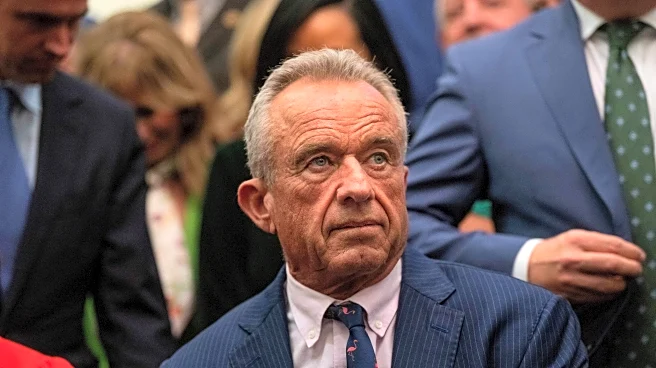What is the story about?
What's Happening?
Larry Gross, President of Gross Transportation Consulting, discussed the current state of the intermodal market, focusing on the recently announced partnership between CSX and BNSF. Gross highlighted that only 14% of intermodal activity interchanges between railroads, with significant costs associated with rubber tire transfers in Chicago. He emphasized the need for railroads to work closely to increase this percentage, as trucking has a national network while intermodal networks are regional. Gross also commented on the potential impact of the Union Pacific-Norfolk Southern merger, noting that while it could theoretically grow intermodal business, significant changes in operating strategies are necessary. He expressed skepticism about the merger's ability to reverse carload losses, citing historical data showing a decline in carloads despite GDP growth.
Why It's Important?
The analysis by Larry Gross underscores the challenges and opportunities within the intermodal market, particularly in light of the CSX-BNSF partnership and potential mergers. The intermodal sector is crucial for efficient transportation and logistics, impacting various industries reliant on freight movement. The partnership aims to streamline operations and reduce costs, potentially benefiting shippers and consumers through improved service levels. However, the regulatory complexities and costs associated with mergers pose risks that could affect service quality and market dynamics. The discussion also highlights broader economic implications, including the impact of tariffs and trade uncertainties on intermodal growth and investment decisions.
What's Next?
The intermodal market is expected to continue evolving, with stakeholders closely monitoring the outcomes of the CSX-BNSF partnership and the Union Pacific-Norfolk Southern merger. Regulatory decisions by the Surface Transportation Board (STB) will play a critical role in shaping the future of these initiatives. Railroads may need to adopt new strategies to enhance intermodal service and capture growth opportunities in underrepresented markets. Additionally, ongoing trade and tariff negotiations could influence intermodal demand and operational strategies, requiring adaptability from industry players.
Beyond the Headlines
The intermodal market's evolution reflects broader trends in transportation and logistics, including the shift towards more integrated and efficient systems. The partnership and potential mergers highlight the need for collaboration and innovation to address complex market challenges. Ethical considerations arise from the impact of tariffs and trade policies on small businesses and consumers, particularly lower-income groups. Long-term shifts in supply chain strategies may result from these developments, influencing manufacturing and distribution patterns across the U.S.
AI Generated Content
Do you find this article useful?
















